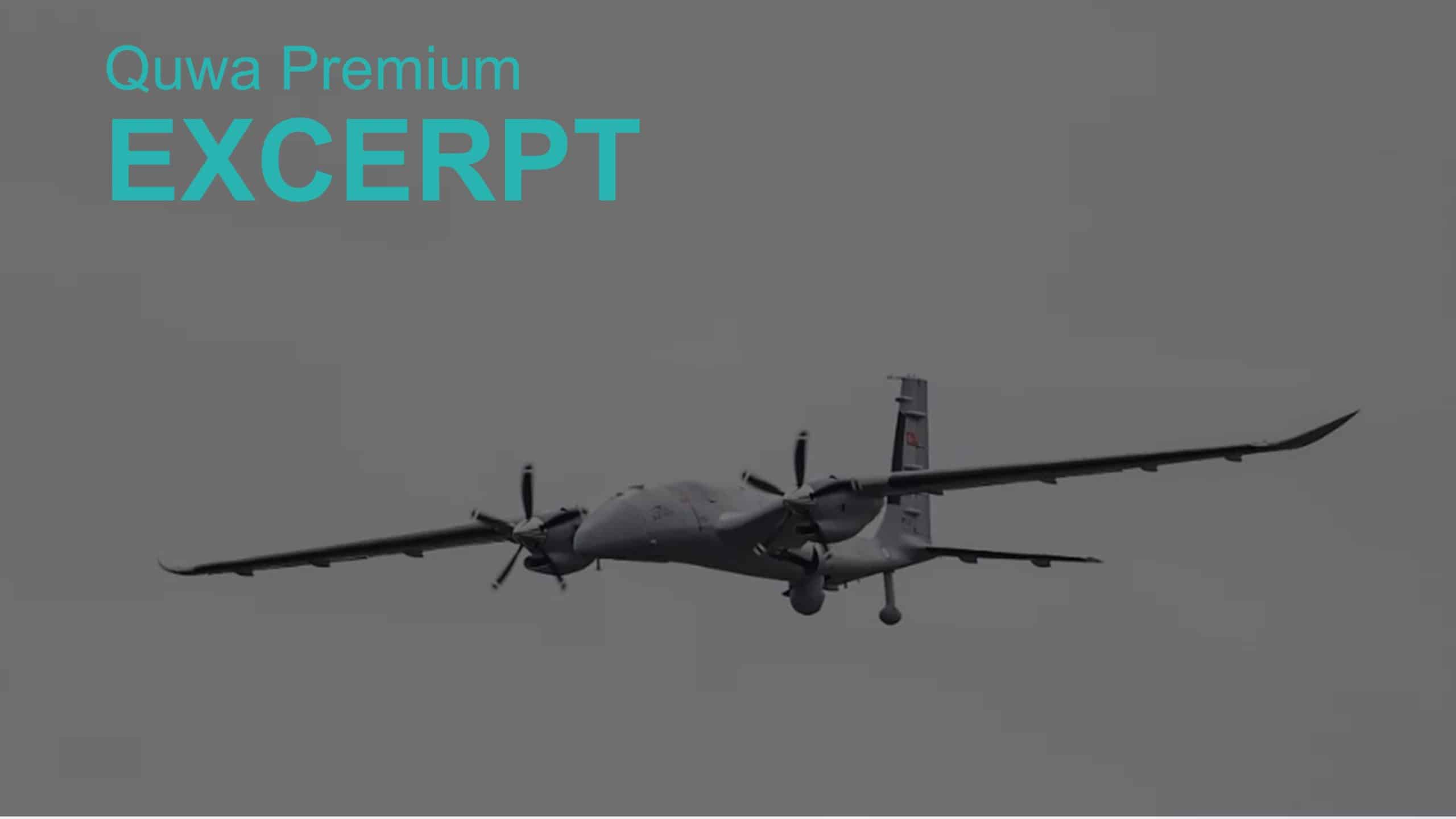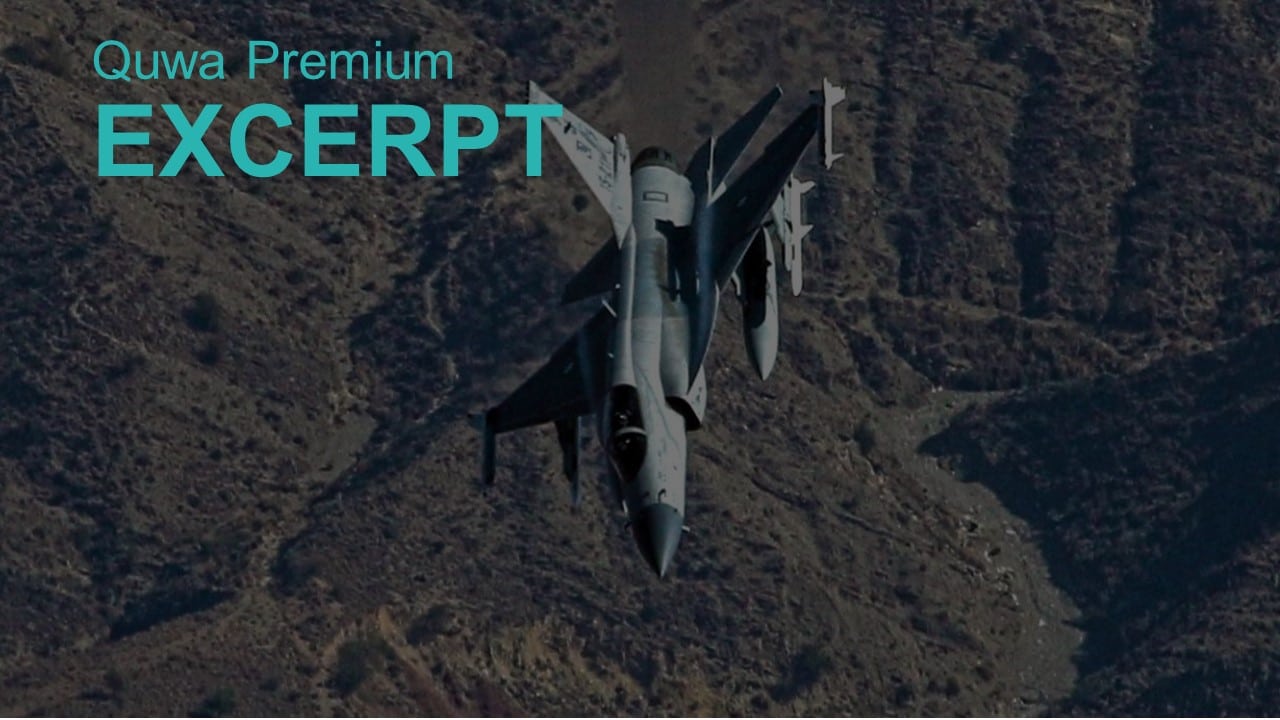1957Views

Bayraktar Akıncı: Turkey’s Next Statement Drone Shows its Potential
Through June and July, Baykar Makina test-fired several guided air-to-ground munitions from its Bayraktar Akıncı high-altitude long-endurance (HALE) unmanned aerial vehicle (UAV).
For example, on June 15, Baykar Makina test-fired the KGK-SIHA-82 gliding precision-guided bomb (PGB). The company followed up by test firing the TEBER-82 laser-guided bomb (LGB) on June 22, and then the LGK-82 LGB on July 02, from the Bayraktar Akıncı.
The test firings indicate that Baykar Makina is actively working to configure the Akıncı with stand-off range weapons (SOW). Baykar Makina’s goal is to eventually arm the Akıncı with heavyweight munitions, such as air-launched cruise missiles (ALCM), and even air-to-air missiles (AAM).
The Turkish Armed Forces (TSK) inducted the Bayraktar Akıncı in August 2021. Baykar Makina is marketing the Akıncı to potential overseas customers. In January 2022, Baykar Makina announced that it signed its first export contract for the Bayraktar Akıncı.
While a twin-engine design, the Bayraktar Akıncı is in the size-class of the General Atomics MQ-9 Reaper.
This fact makes the Akıncı an intriguing system as it offers countries a non-American and, presumably an ITAR-free, HALE UAV that can potentially compare to the MQ-9.
In turn, there are indications that the Pakistan Air Force (PAF) and, potentially, the Pakistan Navy (PN) are both acquiring the Bayraktar Akıncı. Neither Pakistani service arm nor Baykar Makina have confirmed this deal. However, the PAF showcased the Akıncı in one of its promotional videos (alongside other drones).
Thus, a potential Akıncı order would be a major development for the Pakistani military. By adding a long-range, high-altitude UAV, the PAF and PN could open up many new capabilities. This can involve long-haul ‘hunter-killer’ operations for counterinsurgency (COIN), around-the-clock electronic intelligence (ELINT), and naval operations (analogous to the MQ-9B SeaGuardian).
Drones Signify Turkey’s Rise as a Defence Supplier
It is worth highlighting that the Akıncı is another example of Turkey’s growing prowess as a developer and supplier of defence technologies. For those seeking ITAR-free drones at least, Turkey has arguably become a neck-and-neck competitor with China. In some markets (e.g., Central Europe), Turkey is the top vendor…
End of excerpt. Subscribe to Quwa Premium to read the rest of this section.
How the Akinci Would Impact Pakistan
Simply put, the Akıncı would give Pakistan a drone with significantly more range, endurance, and payload than any of its smaller UAVs, such as the Shahpar-2.
According to Baykar Makina, the Akıncı has a service ceiling of up to 40,000 ft. However, the company also revealed that the Akıncı broke its top altitude record by reaching 45,118 ft. The Akıncı has a top speed of 150-195 knots, and a payload of 1,500 kg. It has an endurance of 24 hours.
To highlight some of its practical performance capabilities, Baykar Makina said that it had flown the Akıncı from western Turkey to Georgia non-stop. From a range standpoint, this could be up to 1,000 km.
In terms of payload, Baykar Makina wants to configure the Akıncı with a diverse line-up of munitions, such as the SOM-A ALCM as well as the Gokdogan and Bozdogan AAMs…
End of excerpt. Subscribe to Quwa Premium to read the rest of this section.
Pakistan Air Force
For the PAF, a major goal of its long-term development strategy is to vastly expand its ISTAR (intelligence, surveillance, target acquisition and reconnaissance) capability.
To this end, the PAF is working to introduce SATCOM and use it to operate its drones. This is apparent in the fact that the domestically-built Shahpar-2 is SATCOM-capable, for example. However, the PAF seems to be working on building its vast fleet by inducting various off-the-shelf solutions, notably the Akıncı, TB2, and Chinese Wing Loong II. Other systems, like the TAI-NESCOM Anka project, may be on the roadmap.
In addition, the PAF is also setting up its own Space Command to manage the operation and sensor feeds of its drones (plus feeds from imaging satellites and other ISTAR assets, like AEW&C)…
End of excerpt. Subscribe to Quwa Premium to read the rest of this section.
Pakistan Navy
If it is acquiring the Akıncı, the PN will likely employ it in a similar role as the MQ-9B SeaGuardian. Basically, the PN could use the Akıncı as a supplementing maritime ISTAR and anti-submarine warfare (ASW) asset to operate alongside its RAS-27 Sea Eagle MPAs and forthcoming Sea Sultan LRMPAs.
One can expect the PN to seek to equip the Akıncı with a multi-mission AESA radar, especially Leonardo’s Seaspray-series. Doing so would enable the Akıncı to expand the PN’s surface surveillance and targeting, and do so without having to heavily increase its LRMPA or MPA fleets (or overuse those aircraft)…
End of excerpt. Subscribe to Quwa Premium to read the rest of this section.
Industrial Tie-Ins
It is unfortunate that Pakistan’s drone industry did not evolve as far as Turkey. Currently, Pakistan has to depend on foreign suppliers for HALE UAVs akin to the Akıncı.
However, if Pakistan’s apparent Akıncı acquisitions reach a large enough number, there may be a chance to advance Pakistan’s drone industry through genuine industrial tie-ins…
End of excerpt. Subscribe to Quwa Premium to read the rest of this section.
End of Excerpt (771/1,733 words)
You can read the complete article by logging in (click here) or subscribing to Quwa Premium (click here).
For More on Drone Programs, See:


